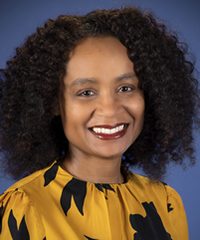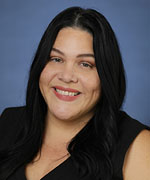Nuclear Medicine Residency Program
Nuclear Medicine Residency


Program Co-Director:
Tracy Yarbrough, M.D., Ph.D., M.A.Ed.

Program Coordinator:
Tonya Chavez
tmachavez@health.ucdavis.edu
Mission Statement
To leverage diversity and excellence in research, academic and clinical molecular imaging to train the future representatives of molecular precision medicine.
Program Goals/Aims
The UC Davis residency program in Nuclear Medicine aims to:
- Provide comprehensive education, training, and experience in all areas of nuclear imaging, physics, radiobiology, radiation protection, and business of molecular imaging and therapy
- Train our residents/fellows to practice as competent nuclear medicine practitioners utilizing appropriate and cutting edge molecular diagnostic and therapeutic methods
- Create an intellectual environment that encourages residents to engage in active learning and critical thinking that fosters continuing professional development after completion of the program
- Stimulate interest in and create an environment conducive to research/scholarly pursuits during the period of residency/fellowship training
- Promote the role of the nuclear medicine physician as a consultant and educator
- Prepare our residents/fellows to successfully complete the certifying examination in nuclear medicine
Program Description
The UC Davis Nuclear Medicine Residency Program has traditionally been a three-year program, requiring one prerequisite internship year (NM1 Pathway); but, given changes in the medical imaging field, our program is moving to a five-year combined Diagnostic Radiology and Nuclear Medicine program. A one-year special competency/fellowship/residency program for radiology resident graduates (NM3 pathway or reverse NM3 pathway) is also available as well as a two-year residency (NM2 Pathway) following completion of a full residency in Internal Medicine, Surgery or Neurology (other completed residencies may qualify for the NM2 pathway). Foreign medical graduates are welcomed, after obtaining an evaluation letter from the California Medical Board along with additional stipulations outlined in the links at the end of the page.
The Nuclear Medicine Residency Program is currently located within the Department of Radiology and includes both inpatient and outpatient care. Nuclear medicine has whole-body SPECT cameras (one single, one dual-head and three SPECT/CT). The department also has two multi-slice PET/CT scanners. UC Davis operates one cyclotron on main campus and has two cyclotrons for human use and research on the health system campus. The program also has one DEXA camera for bone density testing (bone mineral densitometry) and a thyroid probe camera for thyroid uptake.
The Division of Nuclear Medicine is responsible for therapy, oncology, cardiology, pediatrics, and routine nuclear medicine examinations. Ongoing research and collaborations in the nuclear medicine clinics will expose residents to the academic and research components of the university. In addition, the program does offer elective or outside rotations to The Northern California PET Imaging Center, Kaiser Permanente Medical Center, or David Grant Medical Center, Travis AFB, for one to two weeks per year.
An ACGME internship (PG-I year) is required for entrance into our program. The internship must be accredited clinical training in internal medicine, pediatrics, surgery or surgical specialties, obstetrics and gynecology, neurology, family and community medicine, emergency medicine, or any combination of these. No more than a total of three months may be spent in radiology, radiation oncology, and/or pathology.
As this is now primarily a combined program, all applicants must also qualify for the Diagnostic Radiology residency and the application process flows through that department. All Diagnostic Radiology residency applicants who are granted an interview will be given instructions on how to apply for the combined program at the time of interview if they are interested. If you have any further questions, please contact us by phone or email via the information at the top of the page.
Since our department does not offer internships, we do not participate in the National Residency Matching Program for the PG-I year of training. We do participate in the match at the PG-II level, and typically offer one position to begin in July on alternating years. Within 6 months of starting the program, the resident is required to obtain the Postsecondary Training License (PTL) legislated by the State of California.
Graduates of international medical schools must comply with restrictions imposed by the Medical Board of California and be eligible for or be licensed to practice in California. Information concerning licensure is available from the Division of Licensing, Medical Board of California, 2005 Evergreen Street #1200, Sacramento, CA 95815, phone: 916-263-2382.
All applications must be submitted via the Electronic Residency Application Service (ERAS). An application for a position should be submitted preferably no later than November 1st for NM2 pathway (completion of a residency in internal medicine or neurology qualifies for a 2-year residency to get ABNM certification) and NM3 pathways (completion of a radiology residency qualifies for a 1-year residency (basically like a fellowship) to get ABNM certification. All our combo NM/DR residents are technically doing the NM3 pathway in reverse). Personal interviews are granted by invitation only.
